#cold war film
Explore tagged Tumblr posts
Text
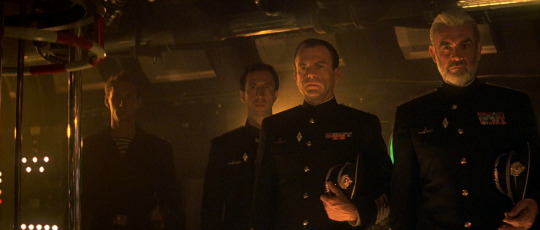
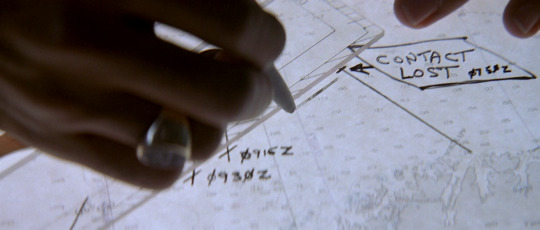








"A man with your responsibilities reading about the end of the world."
The Hunt for Red October, 1990.
Dir. John McTiernan | Writ. Larry Ferguson & Donald E. Stewart | DOP Jan de Bont
#the hunt for red october#john mctiernan#jan de bont#us film#spy thriller#cold war film#submarine film#1990s#10 frames
51 notes
·
View notes
Text
On July 23, 1964, Lord of the Flies debuted in the United Kingdom.

#lord of the flies#lord of the flies 1963#survival film#survival thriller#dystopian film#adventure film#satire#cold war film#allegory#movie art#art#drawing#movie history#pop art#modern art#pop surrealism#cult movies#portrait#cult film#united kingdom
9 notes
·
View notes
Text
The Day After (1983)


When you close your eyes, you start remembering

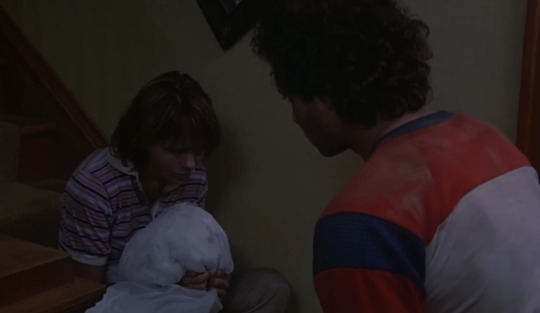
You can’t see it, you can’t feel it, and you can’t taste it, but it’s here
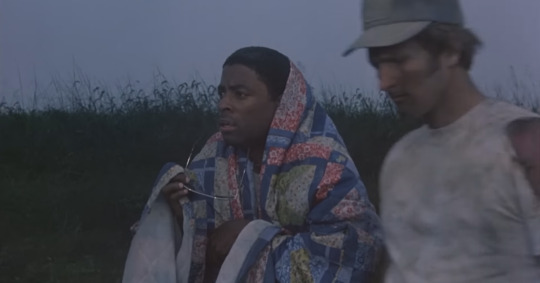

They've got a hospital in Lawrence...
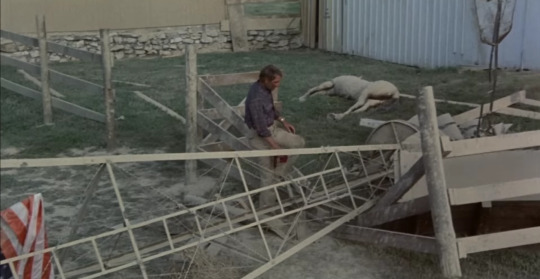

And then from the smoke came locust upon the earth
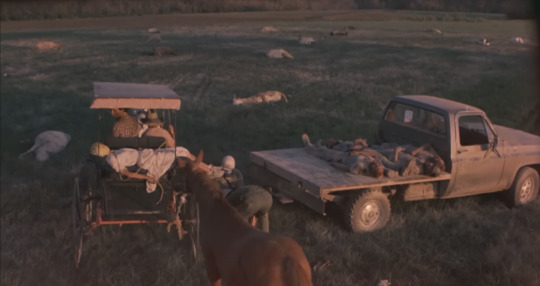
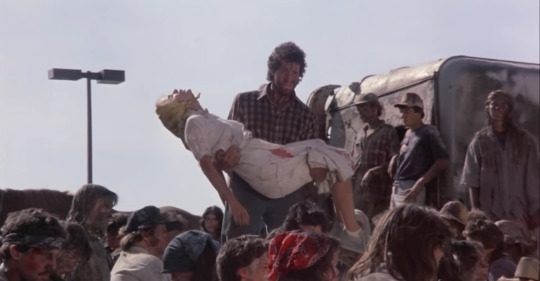
You know what Einstein said? About World War Three? He said he didn’t know how they were gonna fight World War Three, but he knew how they would fight World War Four. With sticks and stones


I’m not going anyplace

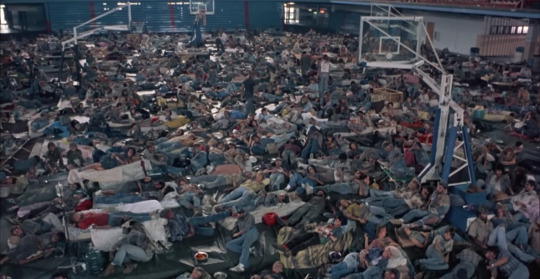
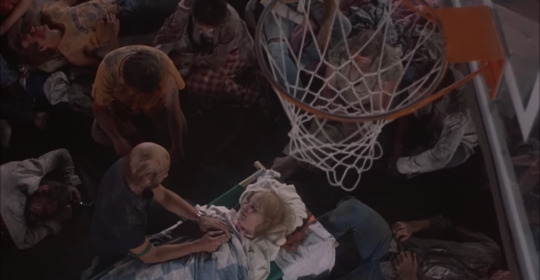
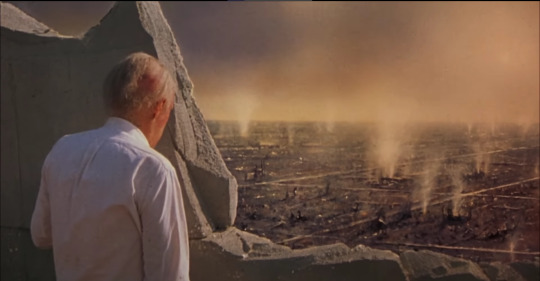
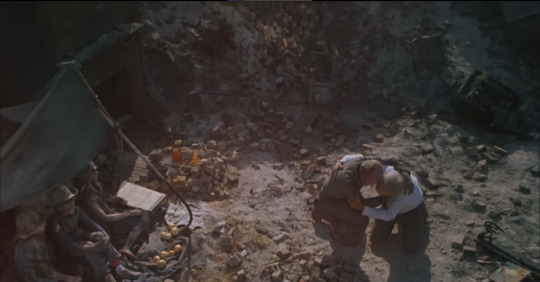
I want to see my home before I die
#the day after 1983#the day after (1983)#the day after#1983#cold war#cold war film#movies#post apocalyptic#apocalypse#disaster#disaster movies#disaster movie#nuclear war#nuclear weapons#atomic bomb#atom bomb#nuclear history#film history#cinema#cinemetography#cinematic history#the end of the world#the end of the world as we know it#kansas city#lawrence Missouri#arms race#politics#anti war
18 notes
·
View notes
Text















“May I rest my weary head on your shoulder?” (insp.)
In the Mood for Love (2000), Rafiki (2018), Cold War (2018), Your Name Engraved Herein (2020), But I’m a Cheerleader (1999), Moonlight (2016), Portrait of a Lady on Fire (2019), And Then We Danced (2019), Eternal Sunshine of the Spotless Mind (2004), My Own Private Idaho (1991), Anatomy of a Fall (2023), Lovesong (2016), God’s Own Country (2017), The Handmaiden (2016), Notorious (1946)
#filmedit#filmgifs#filmtv#anatomy of a fall#and then we danced#but i'm a cheerleader#cold war#eternal sunshine of the spotless mind#god's own country#the handmaiden#in the mood for love#lovesong#moonlight#my own private idaho#notorious#portrait of a lady on fire#rafiki#your name engraved herein#*#compilation*#films#probably the only time I’ll go over 10 gifs#I just felt compelled! (I have no real explanation)#anyways here’s something I’ve been thinking of making for years
4K notes
·
View notes
Text
I just watched Star Trek: The Motion Picture and wow that really is some gay shit
I'd seen the "this simple feeling" scene, I was prepared for that. but I wasn't prepared for the full extent of the conversion therapy allegory
and then Spock saying "it knows only that it needs but like so many of us, it does not know what" while gazing at Kirk
and then the whole fucking resolution being that V'ger needs to discover something more, "a human quality, our capacity to leap beyond logic," through union with a human
it clearly parallels Spock and Kirk with V'ger and Will and directly implies that 'this simple feeling' is love, romantic love
WHAT THE FUCK I can only begin to understand what my fandom ancestors felt seeing this in 1979
#I know these are 45 year old cold takes but isn't it beautiful that I get to experience it for the first time now#anyway my general review of the film is that it was trying to be star wars with the awful ugly beige costumes but without the dramatic figh#sequences that make star wars successful. star trek is at it's best when it's philosophical and I appreciate that they kept true to that#but then the pacing was too slow. and why fuck up what was such iconic costume and set design. also I kept expecting the klingons to#come back cos why set them up at the start and do nothing with it. I love their redesign though. I'm glad it's not just blackface anymore#star trek#kirk/spock#spirk#star trek: the motion picture
140 notes
·
View notes
Text
I’m a different woman with you. And I don’t like myself that way.
.
.
Cold War (2018).
#dearorphica#cinema#film#black and white cinema#perioddramasource#filmedit#polish cinema#cold war era#intimacy#love#quotes#couple#movie quotes#movies#movie aesthetic#romantic film#european cinema#love live
56 notes
·
View notes
Photo


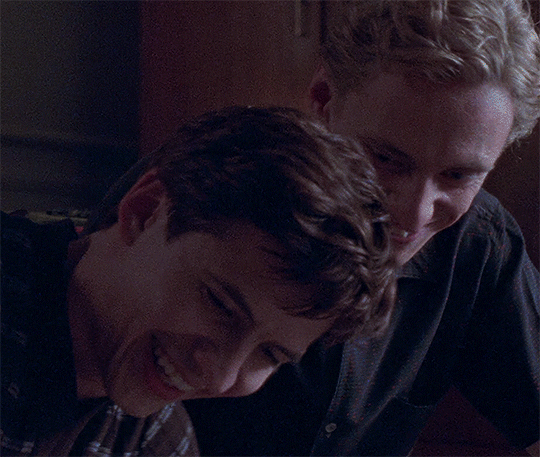
OLEG IVENKO & SERGEI POLUNIN 2018 • The White Crow • dir. Ralph Fiennes
#i wished dey fucked - wuddabn so hot#turns out rudolf woz just crushing#oleg ivenko#rudolf nureyev#sergei polunin#yuri soloviev#the white crow#filmedit#perioddramaedit#homoeroticism#lgbtedit#ralph fiennes#romancegifs#film#movie#queer media#ballet#period drama#1960s#cold war#paris
377 notes
·
View notes
Text
East German Hijinks
I've been taking a look at the Cold War Museum in Virginia's digital archive of photos, interviews, and declassified documents from members of the US Military Liaison Mission in East Germany. It's a really weird bit of espionage history where basically each occupying power in Germany granted each other the ability to have stationed a handful of military personnel separate of any embassy or consulate who could just sorta... go places. They called it touring. These guys are sort of diplomatically immune and can go most places in the country outside of certain restricted zones (which the Americans immediately ignored).
Looking at the loosely organized photo gallery from servicemen who were stationed there from the 60s to the late 80s, there were a few commonalities that really stood out, in between family photos, state dinners, and visiting dignitaries. But every. single. person. had at least one photo of their service vehicle (usually a Jeep or a Ford muscle car) in a Situation.

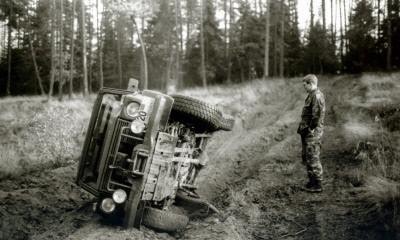
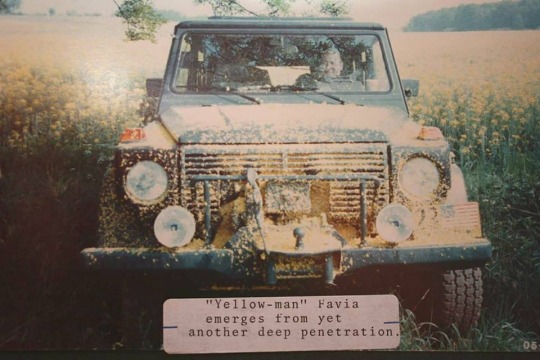

That second to last one there is left for the caption.
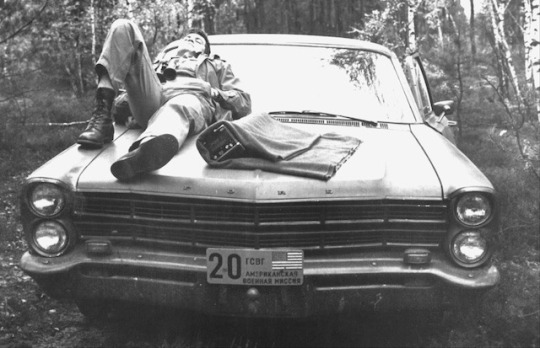
They did a lot of off-roading so they could get covert photos of field activities, convoys, rail resupply, and field exercises. I'm particularly fond of The Device here

But there's also a lot of the human element in there (lots of irritated Kommandatura)
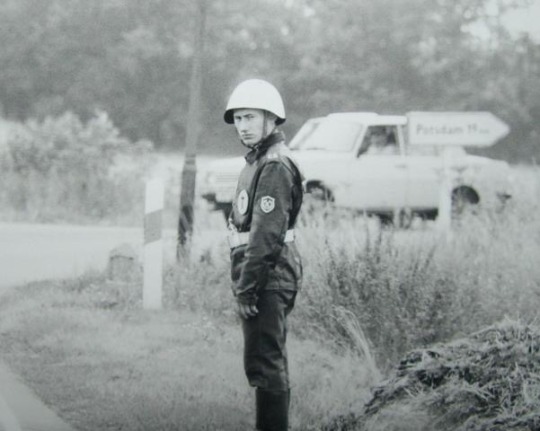
and my personal favorites:

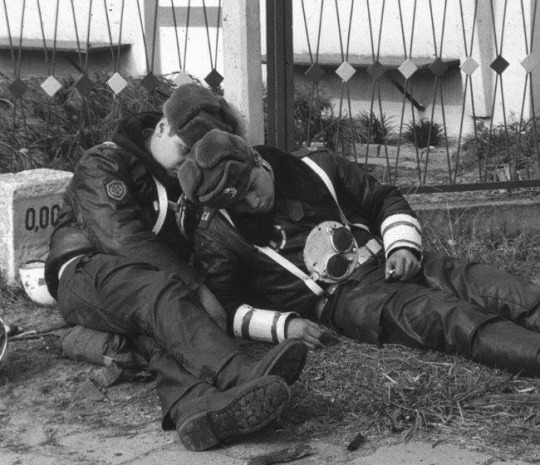
And this last one just has incredible vibes:
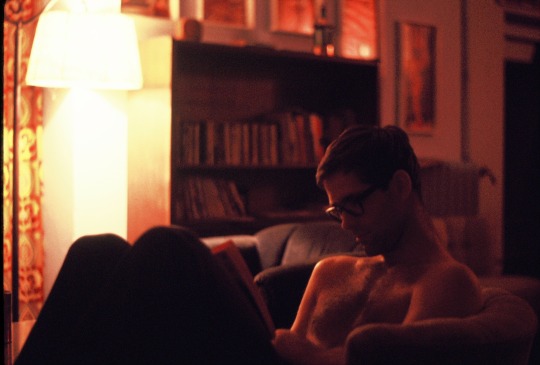
190 notes
·
View notes
Text
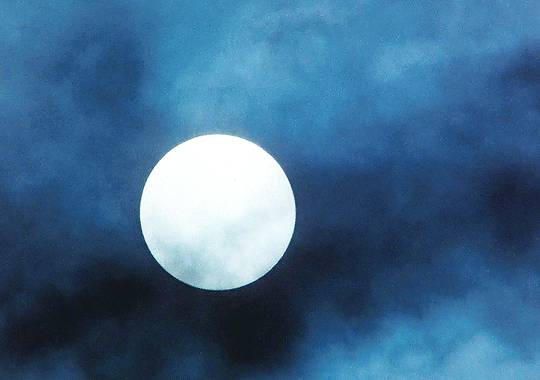


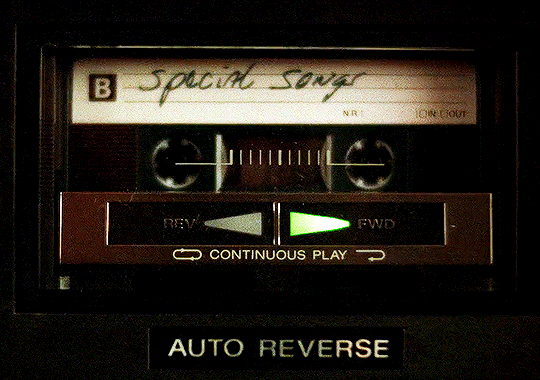
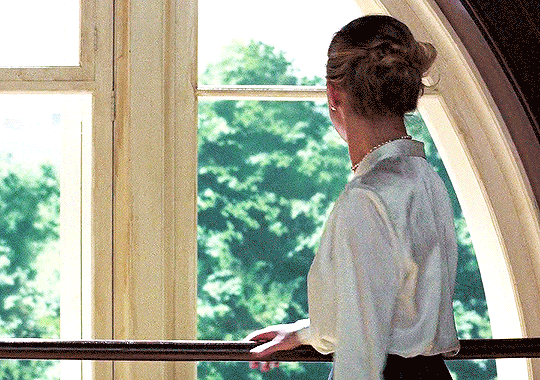

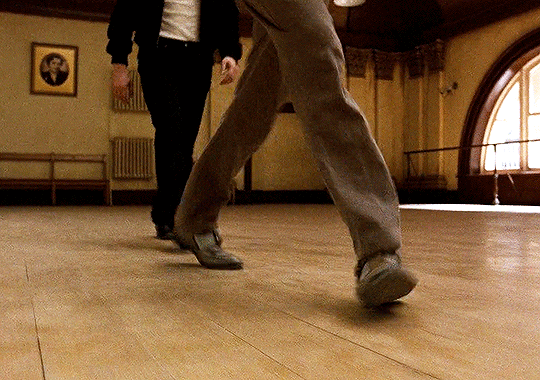
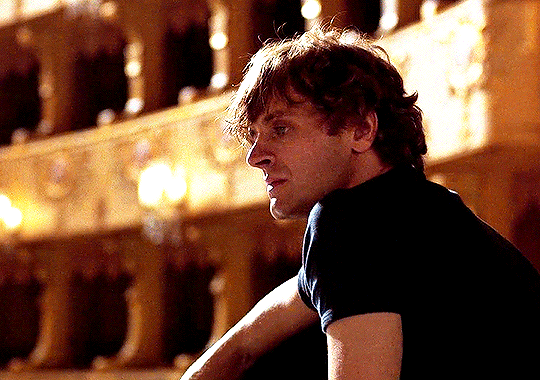

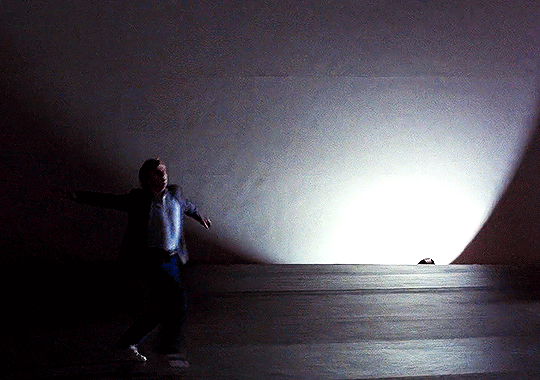
“I’m not a hero, I’m just a dancer.”
WHITE NIGHTS | 1985 | dir. taylor hackford
#what if you could solve racism and the cold war through the power of dance? doesn't happen in this film but they give it their best shot lol#white nights#moviegifs#userfilm#userbbelcher#chewieblog#filmgifs#doyouevenfilm#cinemaspam#fyeahmovies#userrobin#userconstance#usermarina#usersugar#usererry#dailyflicks#mikhail baryshnikov#gregory hines#helen mirren#myedit
141 notes
·
View notes
Text
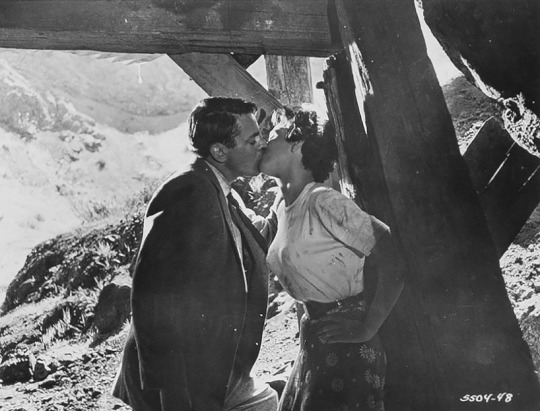

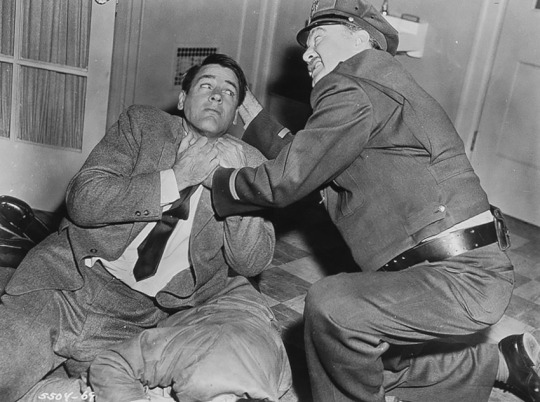



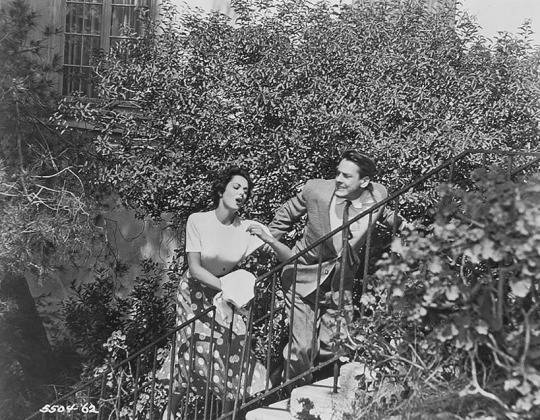
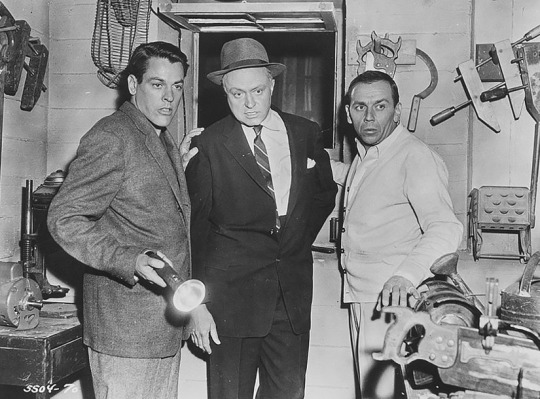
Publicity stills for Invasion of the Body Snatchers (1956)
#invasion of the body snatchers#film#black and white#cold war#noirvember#film noir#noir#horror#sci-fi
149 notes
·
View notes
Text
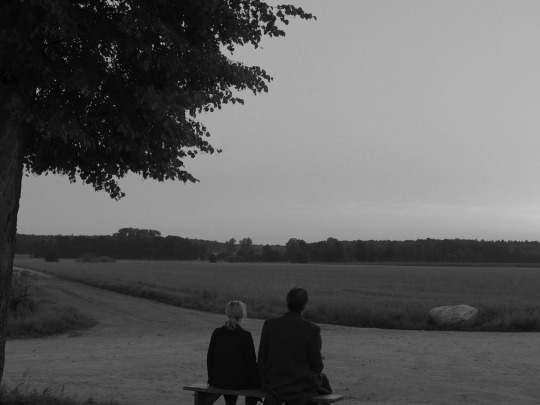
Cold War (Paweł Pawlikowski, 2018)
103 notes
·
View notes
Text

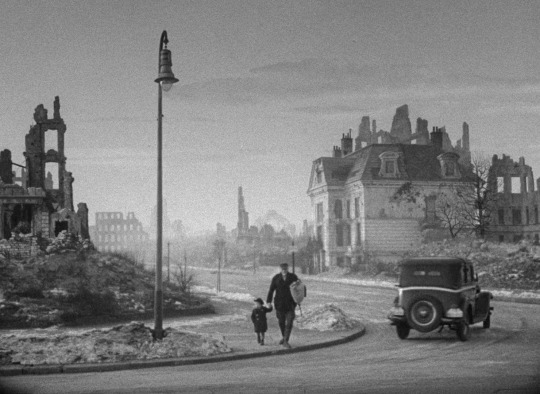
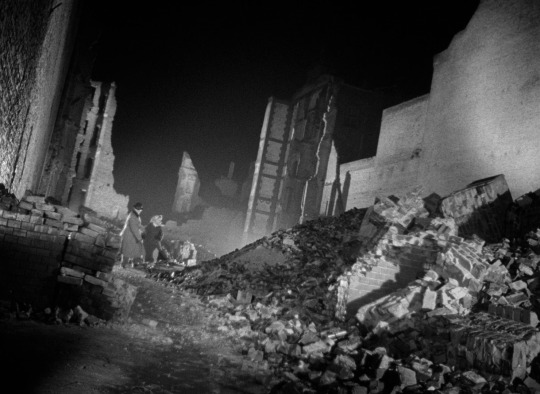
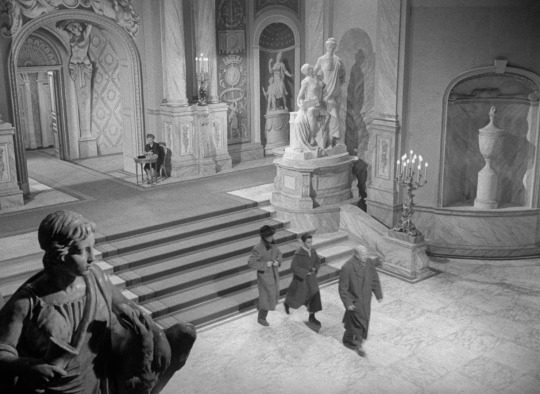
Art direction in The Man Between (1953) dir. Carol Reed
#the man between#the man between 1953#claire bloom#james mason#carol reed#film noir#cold war#art direction#set design#cinematography#the third man#britain#1950s#decade: 1950s#old hollywood#classic film
88 notes
·
View notes
Text
On June 16, 1983, Lord of the Flies debuted in West Germany.

#lord of the flies#survival film#satire#cold war film#dystopia#british cinema#classic film#post it art#drawing#movie art#art#movie history#west germany
9 notes
·
View notes
Text
—“The Color of Pomegranates” (1969) | By Sergei Parajanov
Song: Born to Die by Lana Del Rey.
#movies#movieedit#the color of pomegranates#sergei parajanov#soviet movies#soviet music#soviet art#soviet aesthetic#soviet cinema#cinema#cinephile#cinemetography#cinestill#film#filmedit#filmmaking#film stills#film scene#1960s#1960s movies#cold war#film and television#film and tv#film aesthetic#film art#film analysis#movie stills#tv stills#cinema stills#tumblr milestone
42 notes
·
View notes
Text


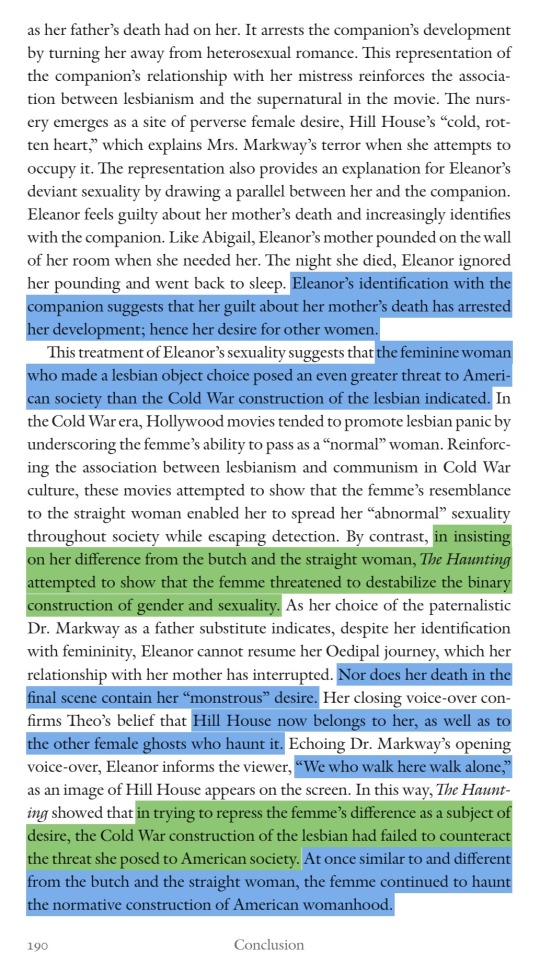
Cold War Hollywood cinema & the threat of the femme to the binary
Conclusion to Cold War Femme by Robert J. Corber (2011)
transcript under the cut
“[…] It didn’t want her to leave, and her poor bedeviled mind wasn’t strong enough to fight it. Poor Eleanor!” But Theo rejects this interpretation and provides an alternative construction of Eleanor’s desire, which does not deprive her of sexual agency: “Maybe not ‘poor Eleanor.’ It was what she wanted, to stay here. She had no place else to go. The house belongs to her now, too. Maybe she’s happier.”
In this way, the movie indirectly challenged the discourse of female homosexuality that circulated in American society during the Cold War era. In associating Eleanor’s sexuality with the supernatural, the movie suggests that it defies explanation. As a feminine woman who has made a lesbian object choice, her desire cannot be attributed to a pathological identification with masculinity. Rather, it requires an explanation that acknowledges her diference from the butch Theo.
The movie’s deviation from the Cold War construction of the lesbian surfaces more fully in its refusal to contain Eleanor’s desire. In the Cold War era movies tended to adopt one of two strategies for containing the threat the femme allegedly posed to the dominant social order. Some movies, like All About Eve, masculinized the femme’s identity by drawing on an older model of sexuality to mark her as a lesbian. In suggesting that the femme’s femininity rendered her lesbianism invisible by disguising her identification with masculinity, these movies assimilated the femme’s desire to the Cold War discourse of female homosexuality, which attributed the development of lesbian identities to a pathological rejection of femininity.
Other movies, like Marnie, contained the femme’s desire by ultimately realigning it with the institutions of heterosexuality. Rather than attribute the heroine’s perverse sexuality to a rejection of femininity that glossed over the diferences between her and the butch, these movies instead rendered her lesbianism “artificial” by attributing it to a traumatic childhood experience. Also drawing on an older model of sexuality, these movies assumed that the feminine woman who made a lesbian object choice was less deviant than the masculine women who did and thus could reorient her desire.
In adopting these strategies, Hollywood cinema refused to acknowledge the femme’s diference from both the butch and the straight woman. The Haunting adopts a diferent strategy: it kills off its heroine. It thereby indirectly validated the new system of sexual classification, which privileged object choice over gender identity. Eleanor’s femininity neither masks an identification with masculinity, nor indicates that she can be incorporated into the institutions of heterosexuality.
Unlike many of the heroines we have encountered in this book, Eleanor’s attempt to realign her sexuality with the law fails. She displaces her desire for Theo onto Dr. Markway, whose paternalistic interest in her she mistakes for love. But in so doing, she replaces an accessible object of desire with an inaccessible one. She does not realize that Dr. Markway has a wife (Lois Maxwell), until she shows up unexpectedly at Hill House to inform him that newspaper reporters are on his trail and to persuade him to abandon his experiment, of which she disapproves.
Mrs. Markway’s appearance precipitates a crisis in which Eleanor imagines that she wants to take her place in the house. Mrs. Markway disappears into the house after being terrifed by a supernatural experience in the nursery, the “cold, rotten heart” of the house where she has insisted on spending the night, and she gets lost searching for her husband. Eleanor increasingly takes on Hill House’s “sick” and “deranged” identity, indirectly confrming the perversity of her desire. In one of her voice-overs, which punctuate the movie, she remarks that she has begun to disappear into the house “inch by inch.”
When Dr. Markway insists that she leave the house while he and the others remain behind to search for his missing wife, she exclaims, “I’m the one who’s supposed to stay. She’s taken my place.” But Hill House cannot incorporate the normative Mrs. Markway, and it ejects her. By contrast, Eleanor’s death in the fnal scene insures that she retains her place in the house as a “kindred spirit.” Eleanor crashes her car into the tree when Mrs. Markway—who in a fluttering white nightgown looks like a ghost—frightens her by darting across the road, and she swerves to avoid hitting her. Despite her normative gender identity, Eleanor cannot be incorporated into the dominant social order.
But even as it acknowledges Eleanor’s diference from both Theo and Mrs. Markway, The Haunting provides a psychoanalytic explanation of her “abnormal” sexuality. Eleanor’s history bears an uncanny resemblance to that of Abigail and her paid companion. After Hugh Crain dies abroad, Abigail continues to inhabit the nursery, which suggests that his death arrests her development by preventing her from resolving the Oedipus complex.
She dies an old woman in the nursery when her companion has a tryst with one of the local “farmhands” on the veranda and fails to hear her when she knocks her cane against the wall. The tryst emerges as a violation of the companion’s homosocial bond with her mistress. After Abigail’s death, the companion lives on in the house in “complete solitude,” and haunted by her role in her mistress’s death she eventually commits suicide by hanging herself from the railing of the circular staircase in the library.
Abigail’s death has the same impact on the companion as her father’s death had on her. It arrests the companion’s development by turning her away from heterosexual romance. This representation of the companion’s relationship with her mistress reinforces the association between lesbianism and the supernatural in the movie. The nursery emerges as a site of perverse female desire, Hill House’s “cold, rotten heart,” which explains Mrs. Markway’s terror when she attempts to occupy it.
The representation also provides an explanation for Eleanor’s deviant sexuality by drawing a parallel between her and the companion. Eleanor feels guilty about her mother’s death and increasingly identifes with the companion. Like Abigail, Eleanor’s mother pounded on the wall of her room when she needed her. The night she died, Eleanor ignored her pounding and went back to sleep. Eleanor’s identification with the companion suggests that her guilt about her mother’s death has arrested her development; hence her desire for other women.
Tis treatment of Eleanor’s sexuality suggests that the feminine woman who made a lesbian object choice posed an even greater threat to American society than the Cold War construction of the lesbian indicated. In the Cold War era, Hollywood movies tended to promote lesbian panic by underscoring the femme’s ability to pass as a “normal” woman. Reinforcing the association between lesbianism and communism in Cold War culture, these movies attempted to show that the femme’s resemblance to the straight woman enabled her to spread her “abnormal” sexuality throughout society while escaping detection.
By contrast, in insisting on her diference from the butch and the straight woman, The Haunting attempted to show that the femme threatened to destabilize the binary construction of gender and sexuality. As her choice of the paternalistic Dr. Markway as a father substitute indicates, despite her identification with femininity, Eleanor cannot resume her Oedipal journey, which her relationship with her mother has interrupted.
Nor does her death in the fnal scene contain her “monstrous” desire. Her closing voice-over confirms Theo’s belief that Hill House now belongs to her, as well as to the other female ghosts who haunt it. Echoing Dr. Markway’s opening voice-over, Eleanor informs the viewer, “We who walk here walk alone,” as an image of Hill House appears on the screen.
In this way, The Haunting showed that in trying to repress the femme’s diference as a subject of desire, the Cold War construction of the lesbian had failed to counteract the threat she posed to American society. At once similar to and diferent from the butch and the straight woman, the femme continued to haunt the normative construction of American womanhood.
#the haunting#the haunting 1963#the haunting of hill house#eleanor vance#nell crain#nell vance#femme#queer femme#butch/femme#cold war#history#queer history#film studies#queer studies#femme theory#all about eve#marnie#robert corber#cold war femme#ableism#suicide mention#homophobia#lesbophobia#character death#image described#mac’s bookshelf#everything goes back to femme
14 notes
·
View notes
Text


crash 1996 / cold war 2018
21 notes
·
View notes